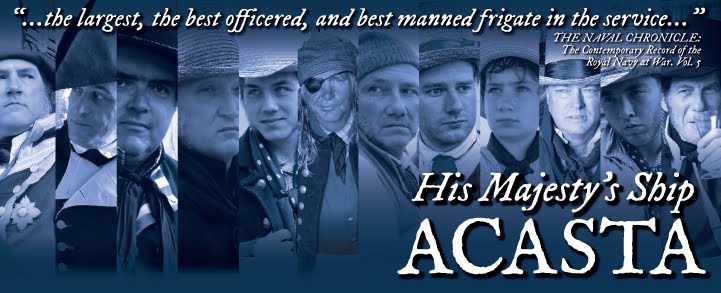LECHMERE.
Acasta Midshipman under Capt. Dunn, 1806, aged 13 years.
John Lechmere, born 9 Jan. 1793, is eldest surviving son of the late Vice-Admiral Wm. Lechmere, of Steeple Aston, co. Wilts, by Elizabeth Dashwood, youngest daughter of Sir John Dashwood King, Bart., of West Wycombe, co. Bucks; younger brother of Commander Chas. Lechmere, R.N. (1815), who died on board H.M.S. Leven 9 Nov. 1822; brother-in-law of the present Lord de Saumarez and a distant cousin of the late Lieut. Edm. Lechmere, R.N.
This officer entered the Navy, in April, 1805, as Midshipman, on board the Thunderer 74, commanded by his father ; after serving in which ship in Sir Robt. Calder's action he was lent, in time to participate in the battle of Trafalgar, to the Orion 74, Capt. Edw. Codrington. In Sept. 1806, having during the last few months been again employed with Capt. Lechmere in the Prince 98, and with Capt. Rich. Dalling Dunn in the Acasta 40, he joined the Royal George 100, flag-ship of Sir John Thos. Duckworth, with whom, in Feb. 1807, he passed the Dardanells. In May, 1809, he followed the same Admiral into the San Josef 110; and between Oct. in that year and Dec. 1811 he served, we find, on the Cape of Good Hope, Lisbon, and Baltic stations, in the Inconstant 36, Capt. Edw. Stirling Dickson, Fokmidable 98, Capt. Jas. Nicoll Morris, and Ckesst 74, Capt. Chas. Dudley Pater. On 24 of the month last mentioned Mr. Lechmere was on board the Grasshopper 18, Capt. Henry Fanshawe, when that vessel, to avoid being lost, as was her consort the Hebo 74, surrendered to the Dutch fleet in the Texel. He accordingly remained a prisoner until the peace of 1814, when he returned to England, and, on 3 Feb. 1815, was promoted to the rank of Lieutenant.
Source: A NAVAL BIOGRAPHICAL DICTIONARY: COMPRISING THE LIFE AND SERVICES OF EVERY LIVING OFFICER IN HER MAJESTY'S NAVY, FROM THE RANK OF ADMIRAL OF THE FLEET TO THAT OF LIEUTENANT, INCLUSIVE. Compiled from Authentic and Family Documents. BY WILLIAM E. O'BYRNE, ESQ.
LONDON: JOHN MURRAY, ALBEMARLE STREET, PUBLISHER TO THE ADMIRALTY. 1849.







































